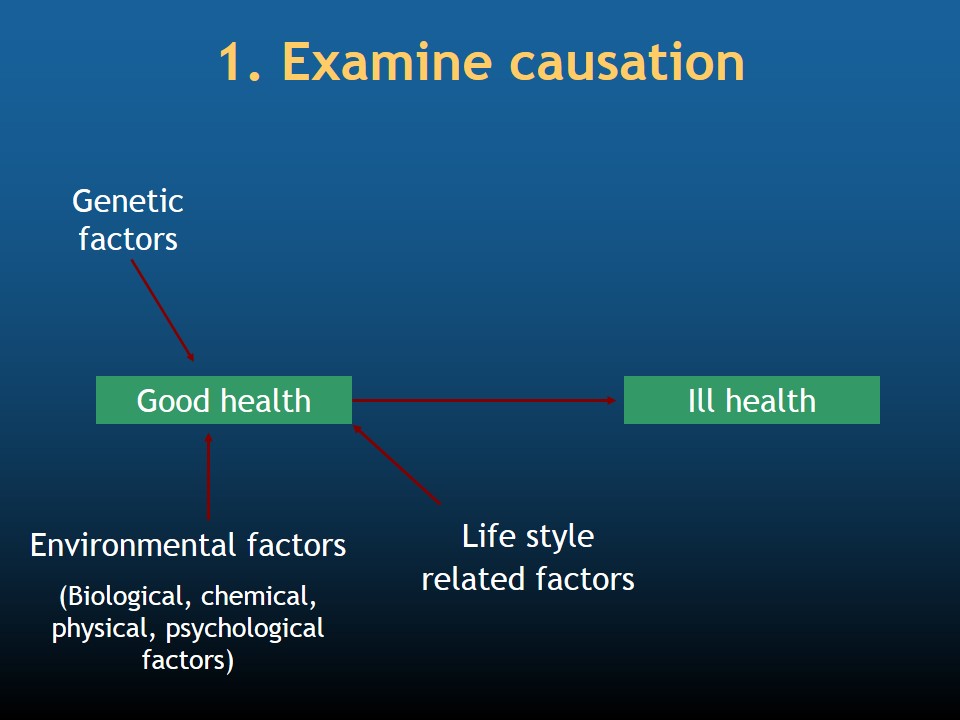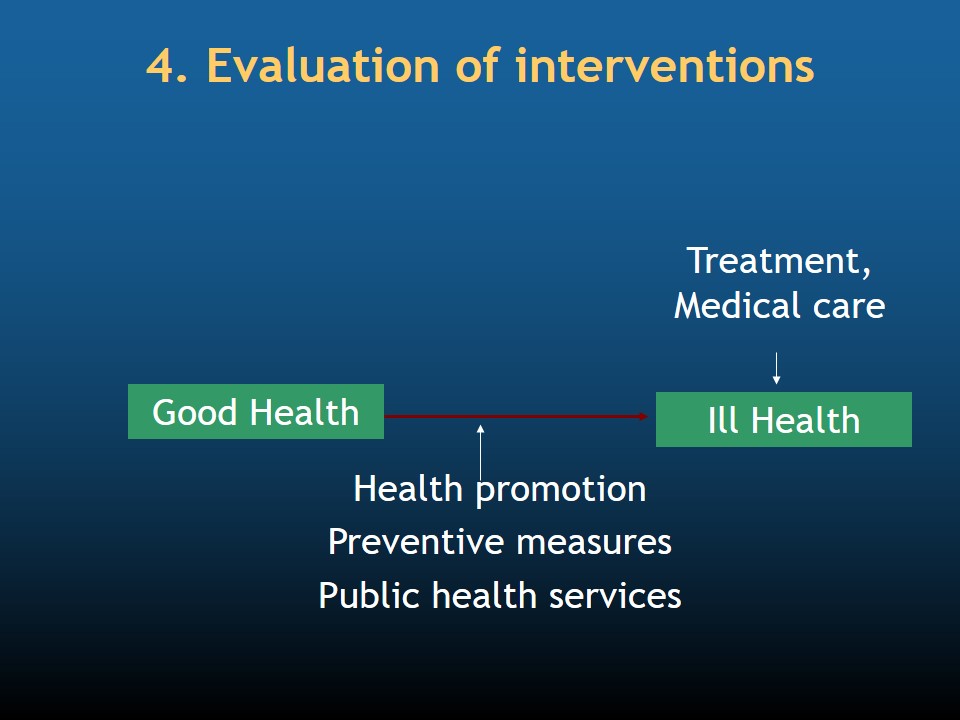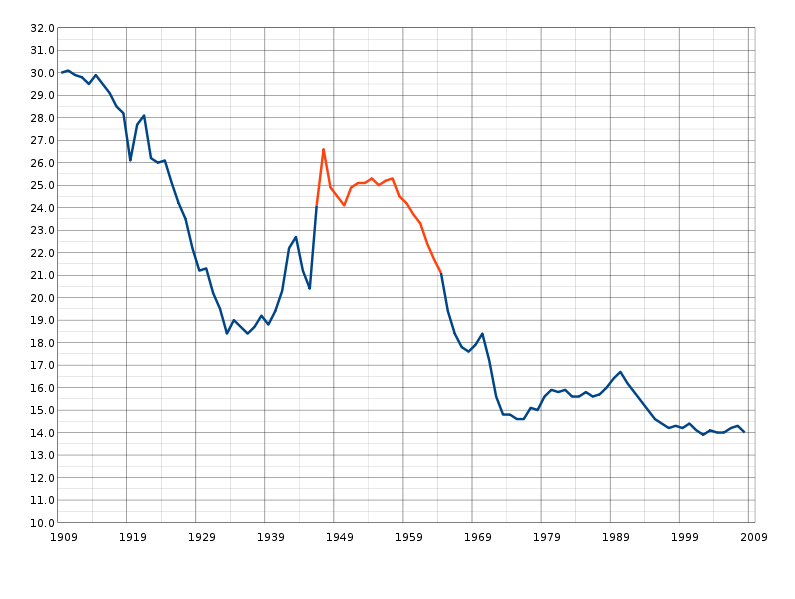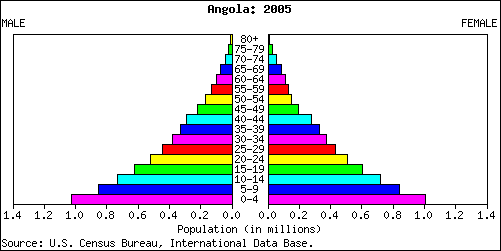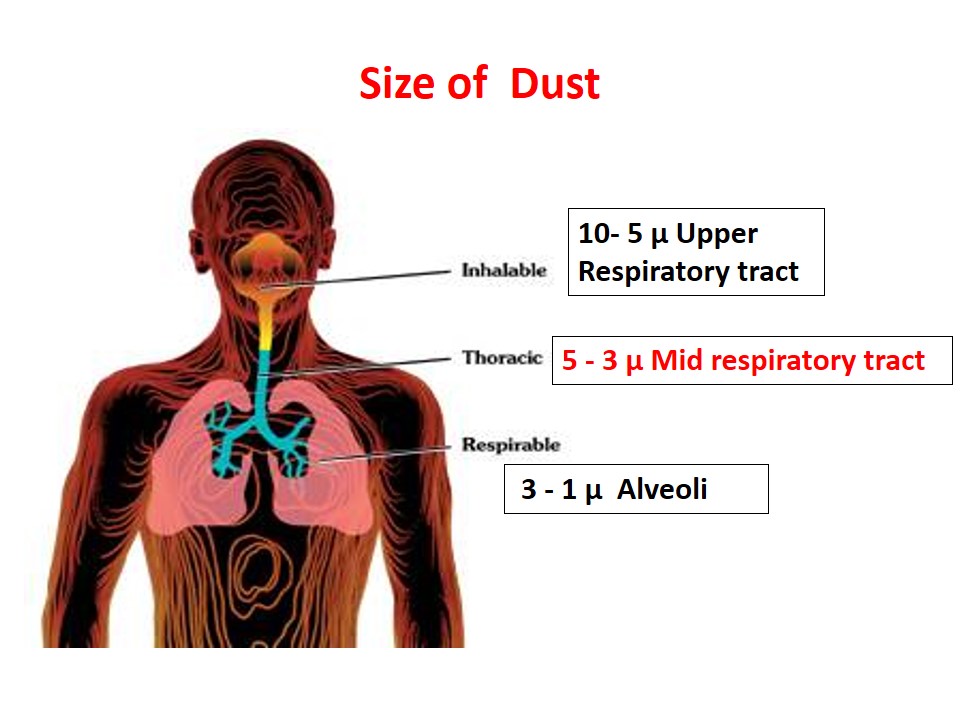Epidemiology is the study of the distribution and determinants of diseases or states in population groups and the application of this study to the control of health problems (Last JM ed. Dictionary of Epidemiology, Oxford University Press, 1995)
‘Epidemiology is that field of medical science which is concerned with the relationship of various factors and conditions which determine the frequencies and distributions of an infectious process, a disease, or a physiologic state in a human community’ (Lilienfeld 1978)
Historical Perspective
Hippocrates – 5th century
Hippocrates found the association between external environment and personal characteristics and health. According to him:
“Whoever wishes to investigate medicine properly should proceed thus: in the first place consider the seasons of the year, and what effects each of them produces. Then the winds, the hot and the cold, especially such are as common to all countries, and then such as are peculiar to each locality. In the same manner, when one comes into a city to which he is a stranger, he should consider its situation, how it lies as to the winds and the rising of the sun; for it influence is not the same whether it lies to the north or the south, to the rising or to the setting sun. One should consider most attentively the waters which the inhabitants use, whether they be marshy and soft, or hard and running form elevated and rocky situations, and then if saltish and unfit for cooking; and the ground, whether it be naked and deficient in water, or wooded and well watered, and whether it lies in a hallow, confined situation, or is elevated and cold; and the mode in which the inhabitants live, and what are their pursuits, whether they are fond of drinking and eating to excess, and given to indolence, or are fond of exercise and labor.” (Hippocrates, “On airs, waters and places” Medical Classics 3:19, 1938).
John Graunt – 1662 (Hennekins and Buring 1987)
The Nature and Political Observations Made Upon the Bills of Mortality
John Graunt used systematic statistical approach and analyzed births and deaths in London. Excess of males were born, with higher mortality for males. Infant mortality was very high as well. He found seasonal variation for mortality and importance of routinely collected information for study of human illness.
William Farr – 1839
William Farr examined mortality and occupation and marital status. He identified important issues in epidemiological investigations and use of comparison in population, along with influence of multiple factors on disease.
John Snow (1854) – Father of modern epidemiology
John Snow established modern epidemiologic methods. He investigated cholera epidemic in London and plotted geographical location of all cases along with deaths from cholera. He went door to door, collecting information on daily habits and suspected water supply as source of epidemic. When broad street pump closed, epidemic stopped.
This mode of investigation is known as “shoe leather”.
Practical application of epidemiology lies in the use epidemiological investigation to impact a health problem.
How the Epidemiologist Works?
An epidemiologist studies origin and distribution of a health problem through collection of data. He, then, constructs a logical chain of inferences to explain the various factors in a society or segment of society that cause a health problem to exist. This is likened to a detective investigating the scene of a crime looking for clues.
An epidemiologist starts with examination of sick person(s) and extends investigation to the setting where illness is occurring. He looks for common denominator that links all the affected so that the cause of the problem can be eliminated or controlled.
Epidemiological Analyses – Areas of Study
Areas of study include causal agents related to disease:
- Biological agents – bacteria, viruses, insects
- Nutritional agents – diet (fats, carbohydrates, food nutrients)
- Chemical agents – gases, toxic agents
- Physical agents – climate, vegetation, chemical pollutants (air, water, food)
- Social agents – occupation, stress, social class, lifestyle, location of residence
An epidemiologist studies
Host characteristics
Biological factors
Age, sex, degree of immunity, other physical attributes that promote resistance or susceptibility
Behavioral factors
Habits, culture, lifestyle
Social environment
- Living conditions such as poverty, crowding
- Norms, values and attitudes
- Socially prescribed standards of living
- Use of food and water, food handling practices
- Household and personal hygiene
Eras of Epidemiology
- Sanitary era – early 19th century
- Infectious disease era – between late 19th century and early 20th century
- Chronic disease era – 2nd half of 20th century
- Eco-epidemiology era – 21st century
Comparing the job of a clinician and the job of an epidemiologist
|
The clinician
|
The epidemiologist
|
|
• Deals with patients • Takes a history • Conducts a physical • Makes a diagnosis • Proposes a treatment • Follows up the patient
|
• Deals with populations • Frames the question • Investigates • Draws conclusions • Gives recommendations • Evaluates programmes
|
Uses of epidemiology
- Examine causation
- Description of the health status of population
- Study natural history
- Determine the relative importance of causes of illness, disability and death
- Evaluation of interventions
- Identify risk factors
To study historical rise and fall of disease in the population
The diseases wax and wane (tuberculosis) new ones appear (encephalitis, asbestos poisoning, LSD psychosis) old ones are eradicated (smallpox)
Searching for causes and risk factors
Different theories have been in existence regarding causes and risk factors:
- Theories in Primitive and Middle Ages
- Supernatural Causes e.g. being possessed by evil spirits, wrath of gods, punishment for evil deeds during previous births “bad air”
- Contagion Theory
- William Farr -Miasma Theory
- Germ Theory – Henle-Koch postulates
- Epidemiological Wheel Theory
- The Theory of “Necessary” and Sufficient” cause
Syndrome identification
Epidemiologists are called “lumpers and splitters”. “Lumping” includes the identification of many manifestations of tuberculosis. Other examples include:
- The differentiation of hepatitis A from hepatitis B and the distinction between several varieties of childhood leukemia.
- Patterson-kelly syndrome of association between dysphagia and iron deficiency anaemia but when association was tested by epidemiological studies, it was not found.
Measures of disease frequency
Prevalence
Number of cases of a disease in a defined population at specified point of time
Incidence
Number of new cases, episodes or events occurring over a defined period of time
Community diagnosis :
The definition of indicators is a pre-requisite. Indicators are used to estimate the burden of illness and the strategies for control.
The main health indicators are expressed in terms of crude age-adjusted or age-specific mortality rates (such as infant mortality rates, mortality for children under 5, or maternal mortality rates), disease-specific morbidity rates, and life expectancy at birth
Evaluation
Evaluation is the process of determining, as systematically and objectively as possible, the relevance, effectiveness, efficiency, and impact of activities with respect to established goals.
Effectiveness refers to the ability of a program to produce the intended or expected results in the field; effectiveness differs from efficacy, which is the ability to produce results under ideal conditions.
Efficiency refers to the ability of the program to reproduce the intended results with a minimum expenditure of time and resources.
Descriptive Epidemiology
Descriptive epidemiology involves collecting all data describing occurrence of disease, in terms of person, place and time variables.
Person
Disease predominates in smokers
Disease predominates immune compromised individuals
Place
Disease is associated with an arid climate
Disease is associated with a tropical climate
Time
Disease associated with the date of company picnic
A particular year
Disease surveillance
- Frequency with which the disease occurs
- Definition of the disease
- Size of the population from which the cases develop
- Completeness of the reporting of the cases.
Factors Associated with Increased Risk of Human Disease
|
Host (Intrinsic) |
Agents |
Environment (Extrinsic) |
|
• Age • Gender • Ethnicity • Religion • Customs • Occupation • Heredity • Marital status • Family background • Previous diseases |
• Biological (bacteria, etc.) • Chemical (poison, alcohol, smoke) • Physical (auto, radiation, fire) • Nutritional (lack, excess) |
• Temperature • Humidity • Altitude • Crowding • Housing • Neighborhood • Water • Milk • Food • Radiation • Air pollution • Noise |
Epidemiology, which is the basis of public health, measures mortality and morbidity by rates, ratio and proportion.
Ratio is one number divided by another number (numerator doesn’t have to be included in denominator—and vice versa)
Proportion is a ratio in which the numerator is included in the denominator. It has no dimension because the unit of the numerator cancels out the unit of the denominator
Rate is a ratio. The numerator is the number of events. The unit is event (i.e., number of cases). The denominator is the sum of follow-up time contributed by the people at risk of the event. The unit is time or, more accurately, person-time to account for duration of time of follow-up
 howMed Know Yourself
howMed Know Yourself
